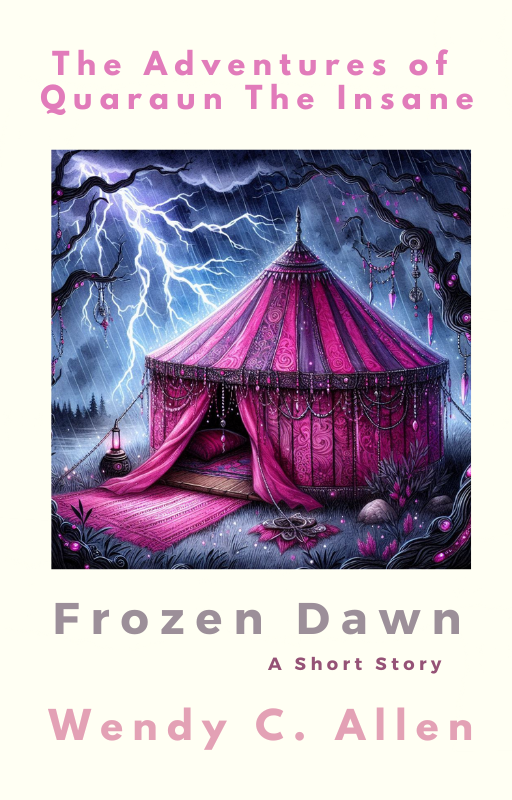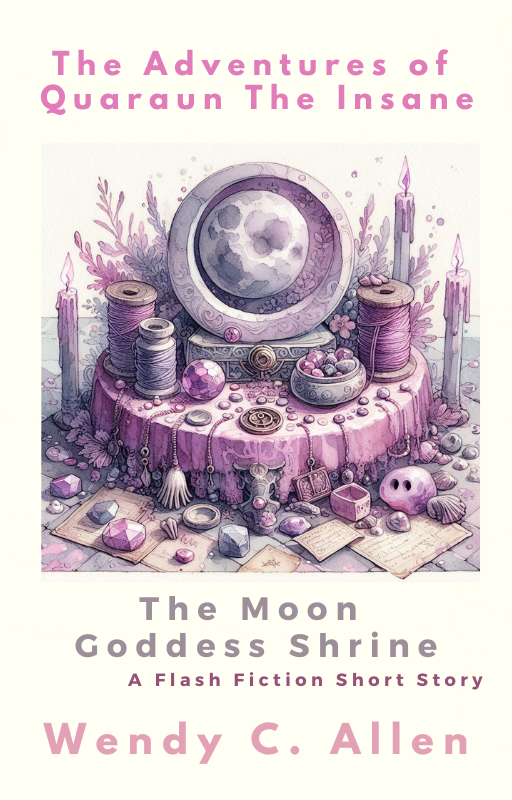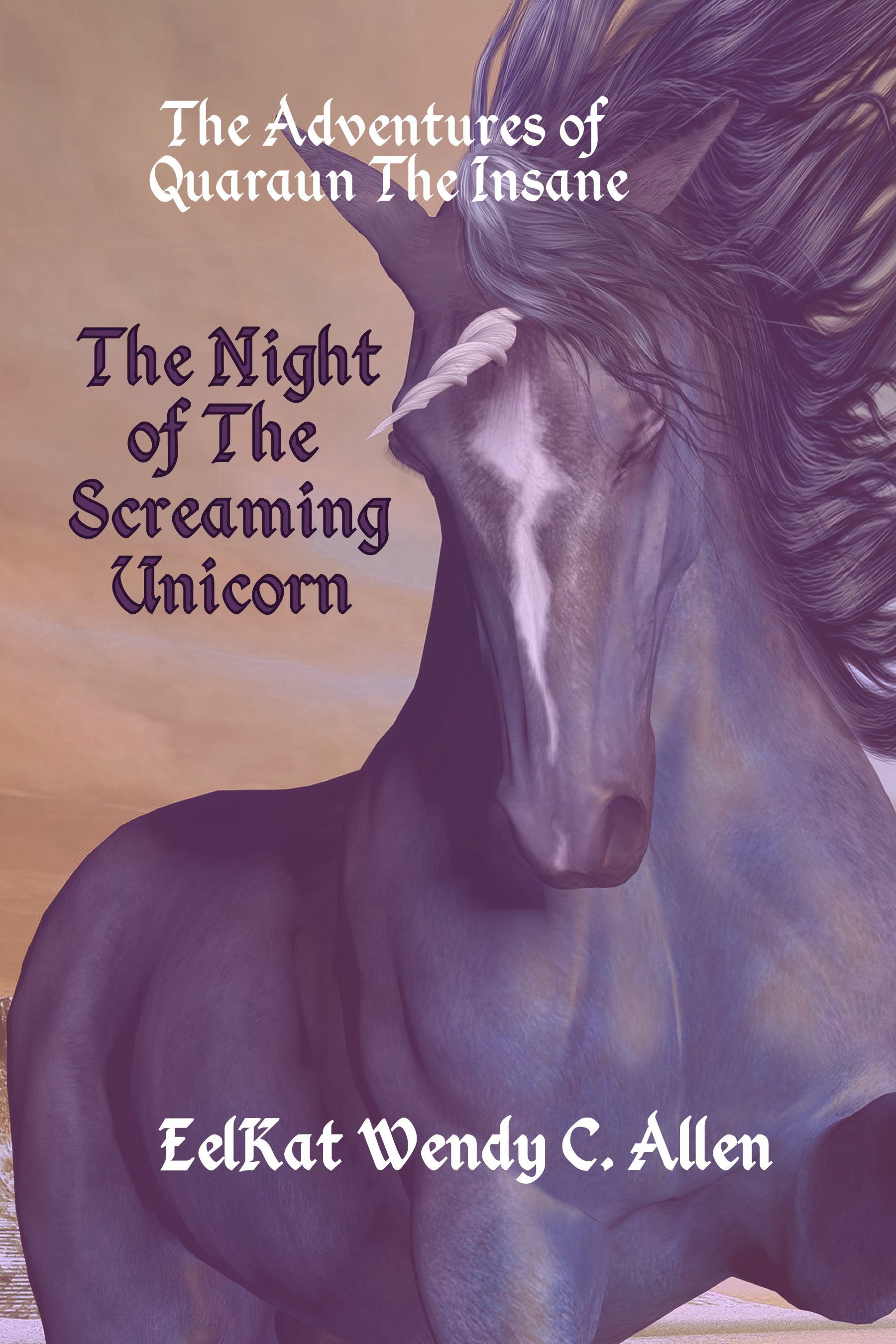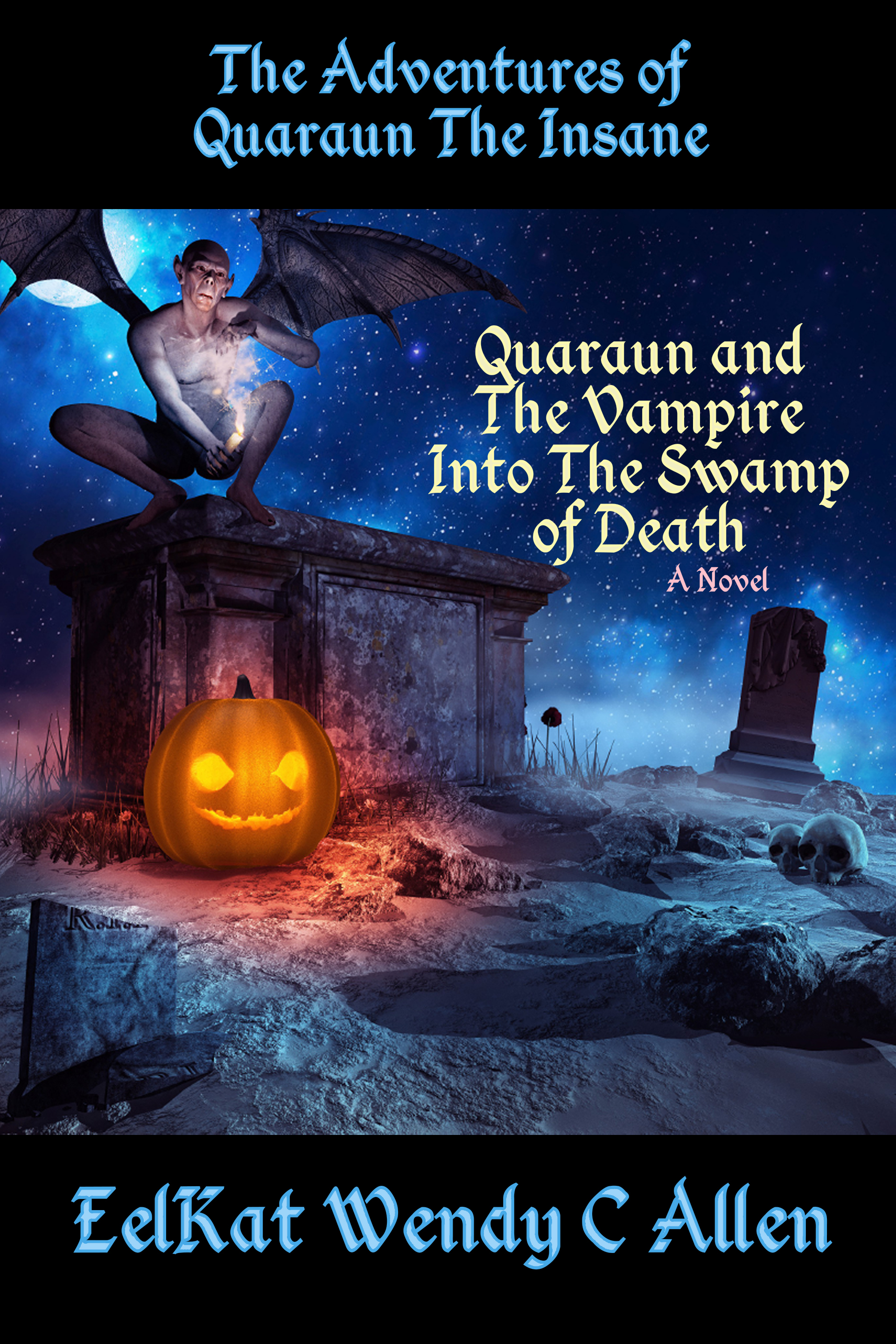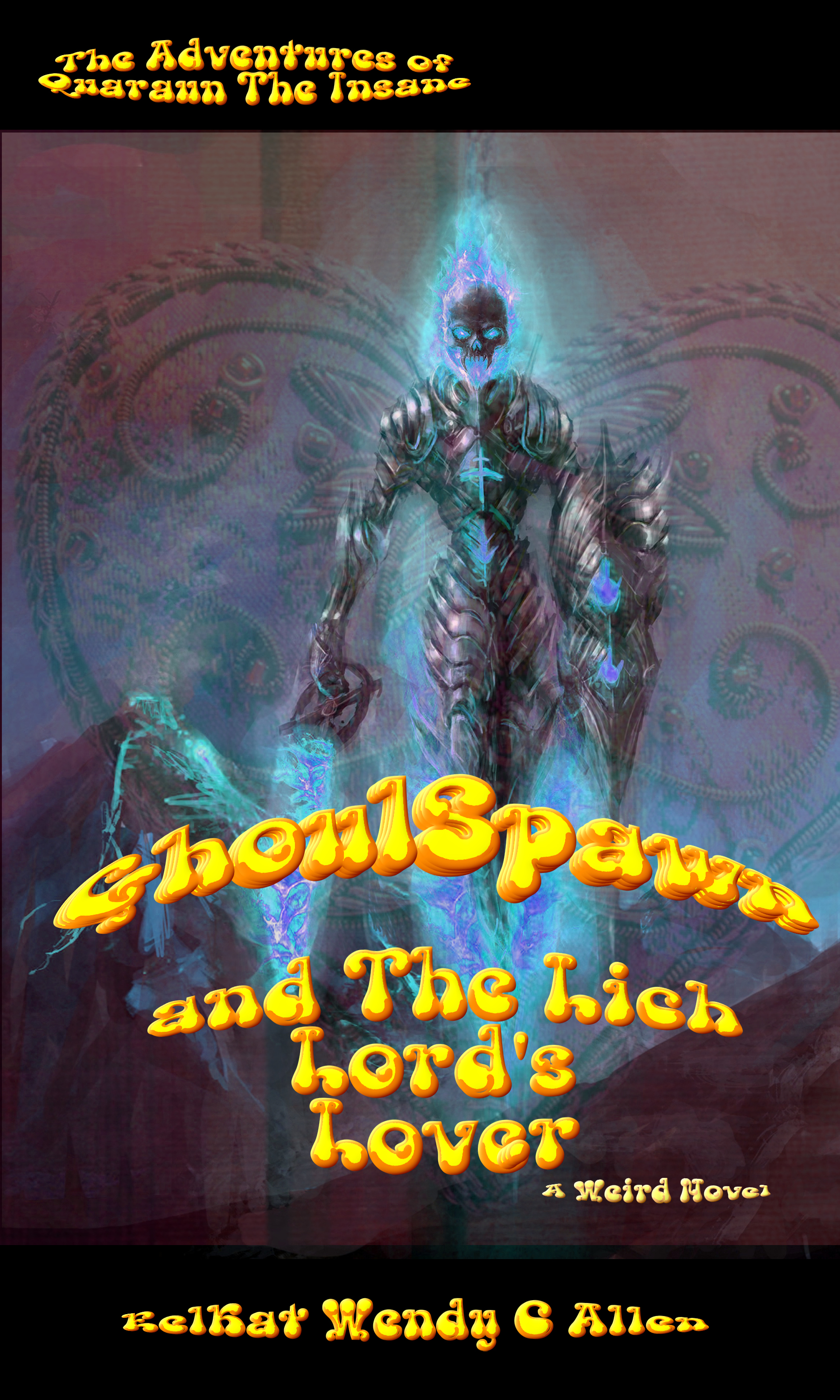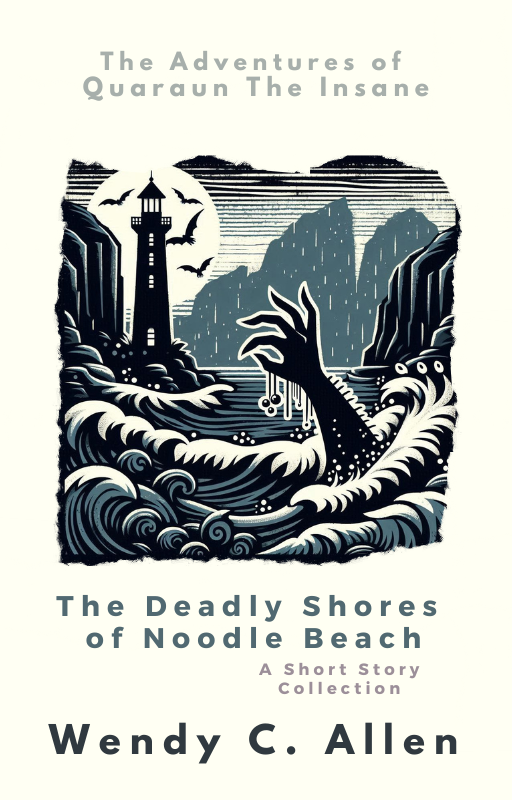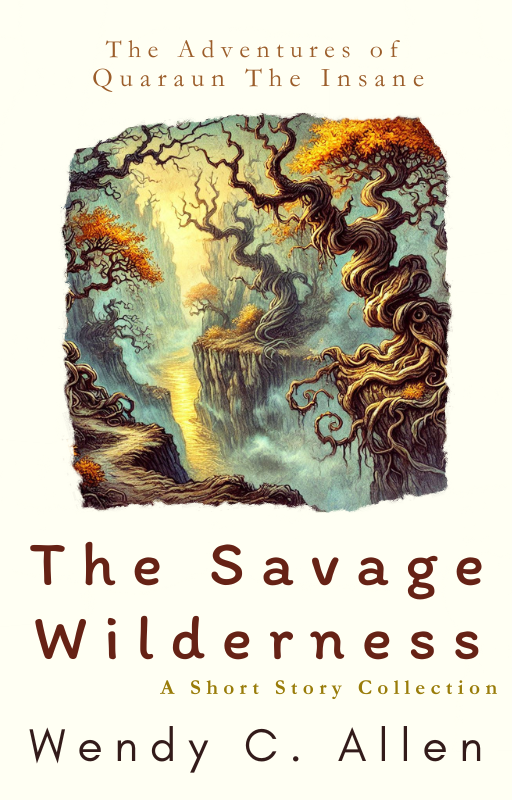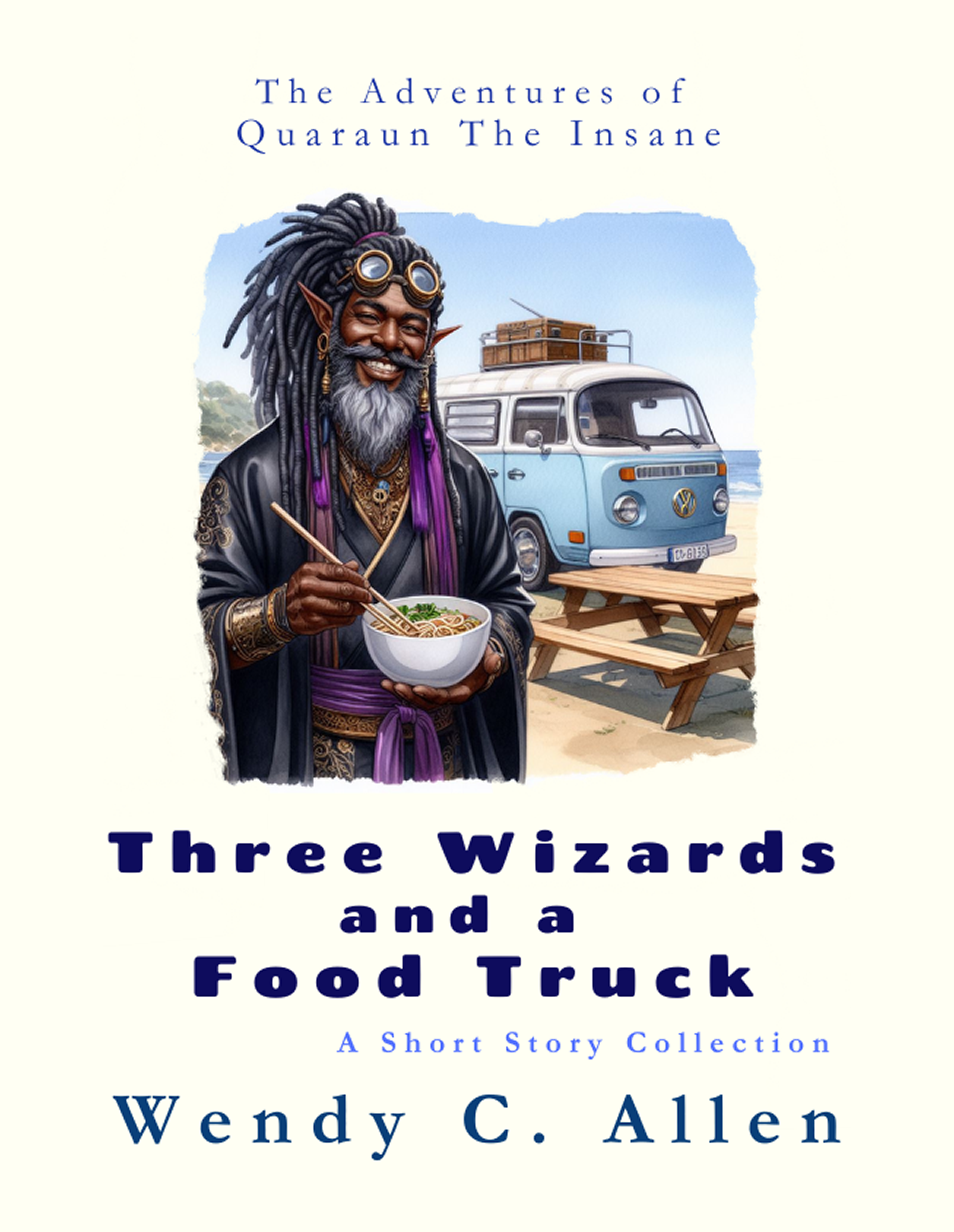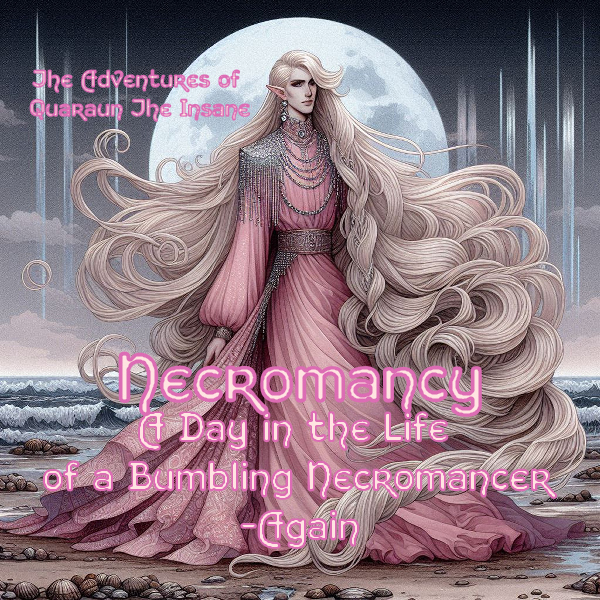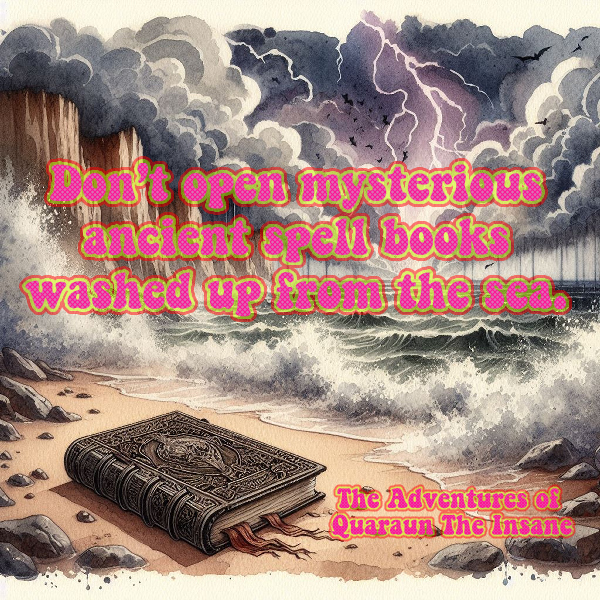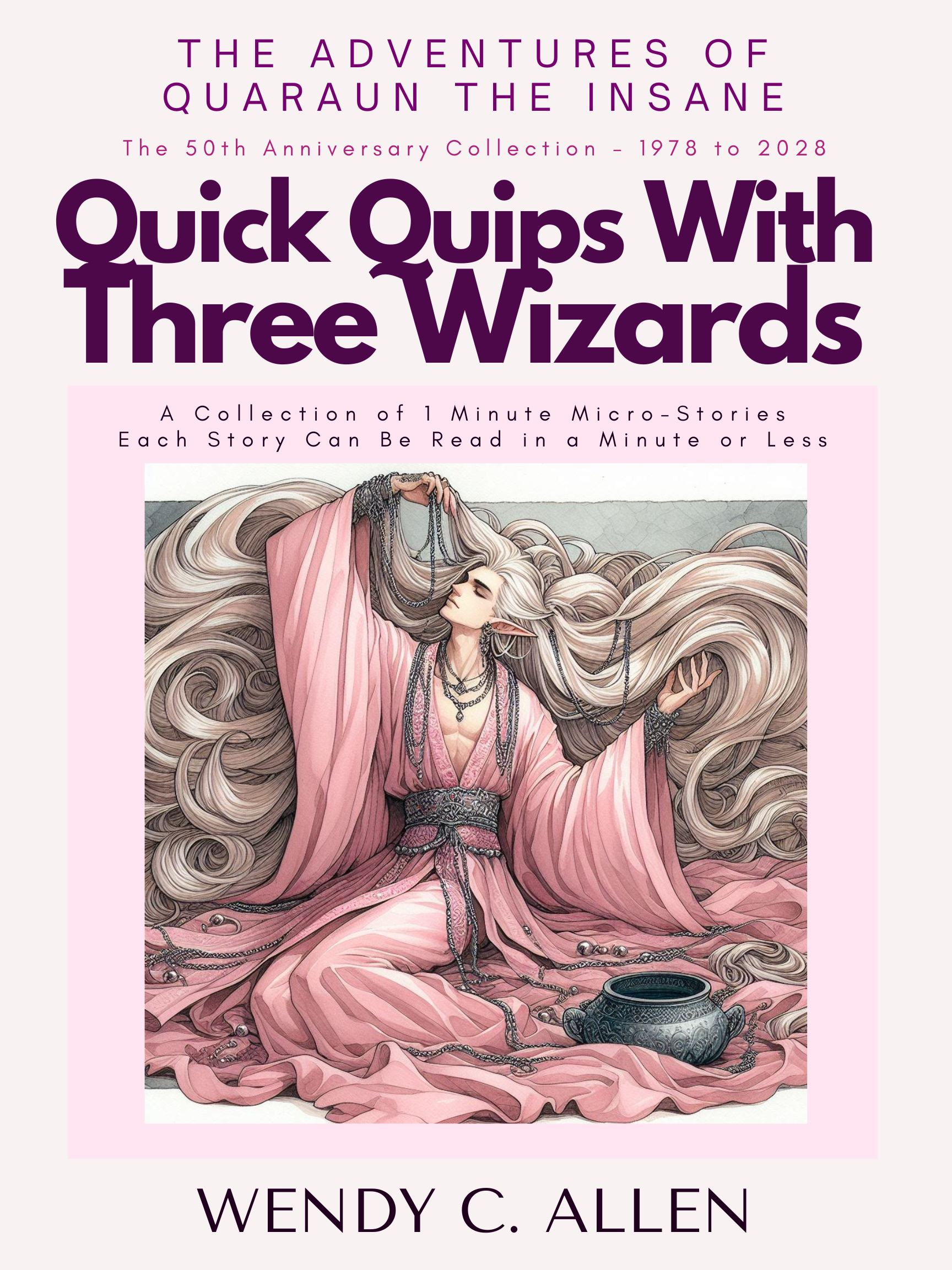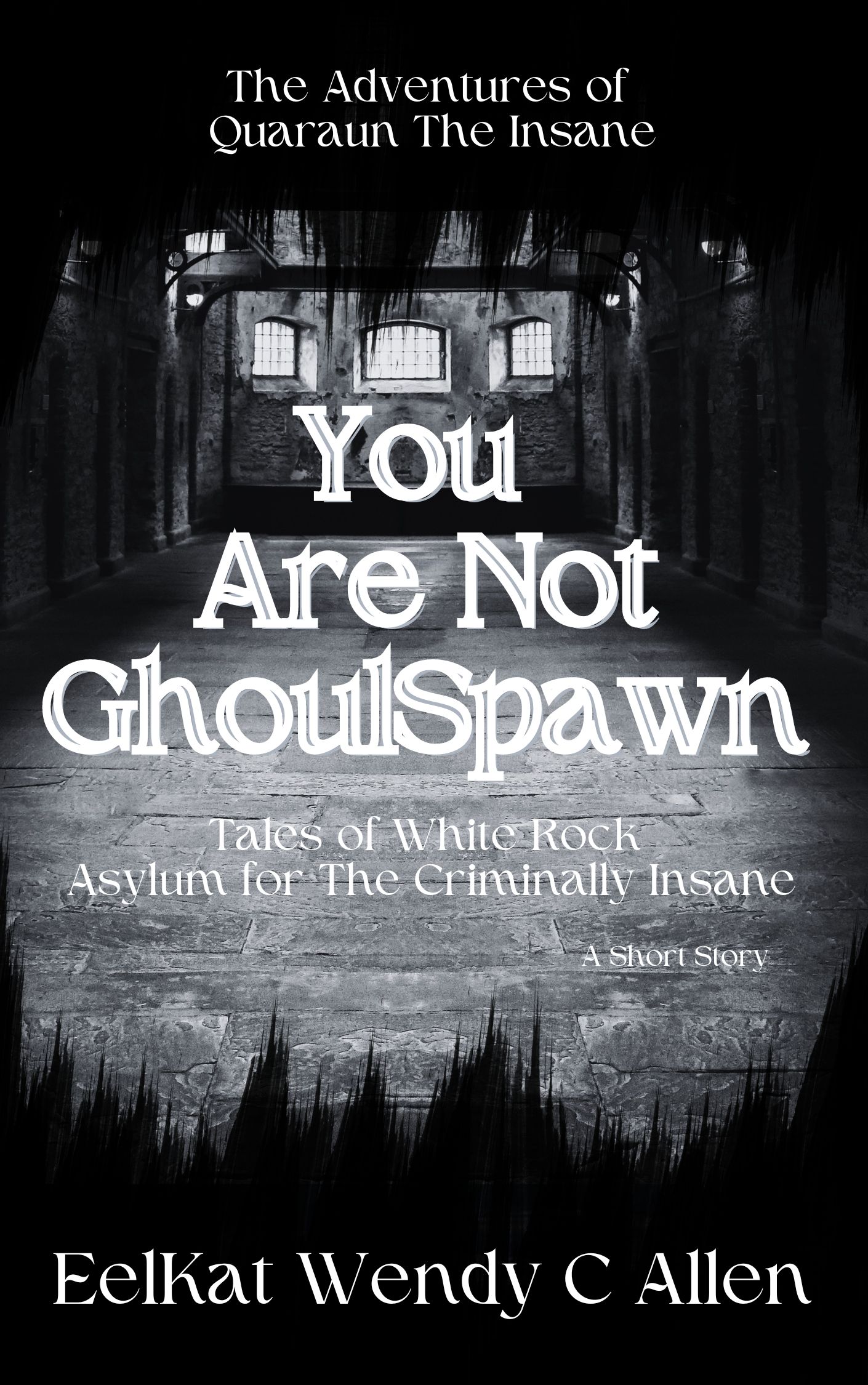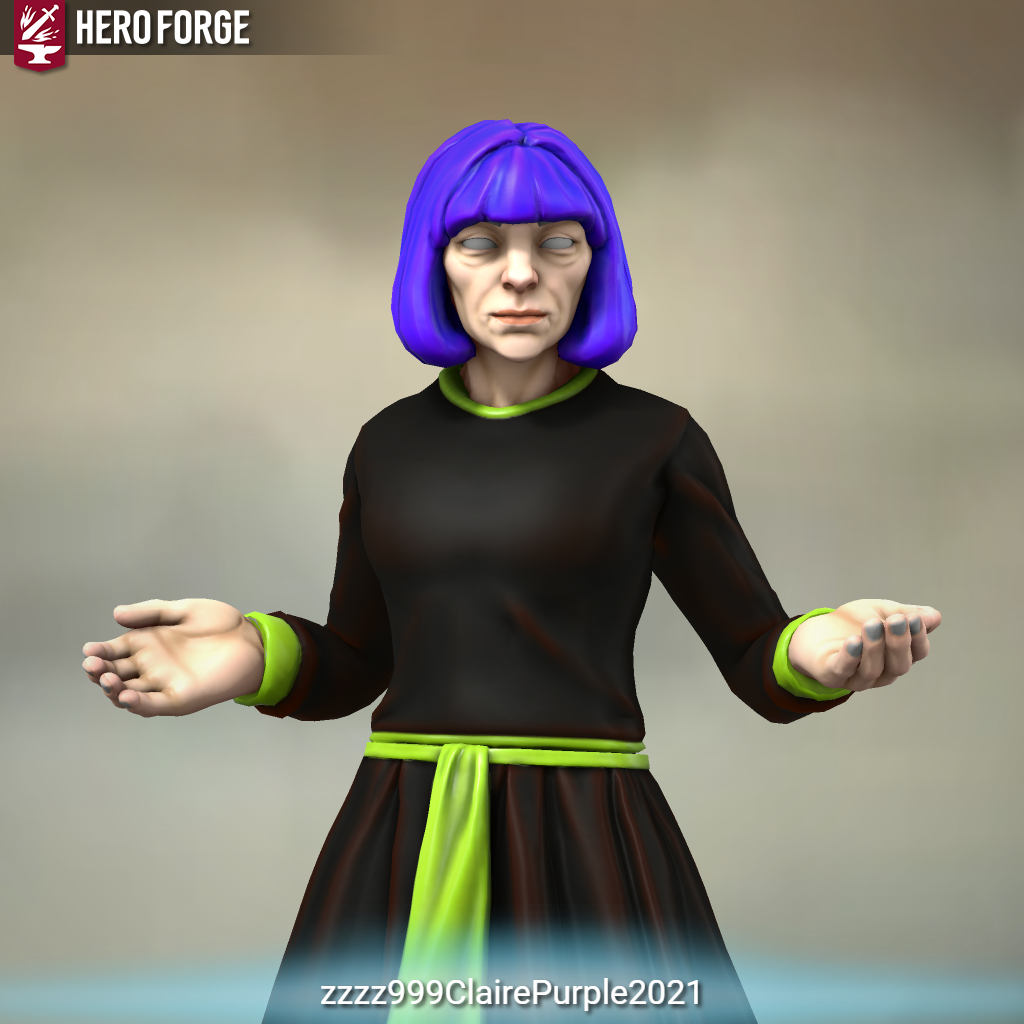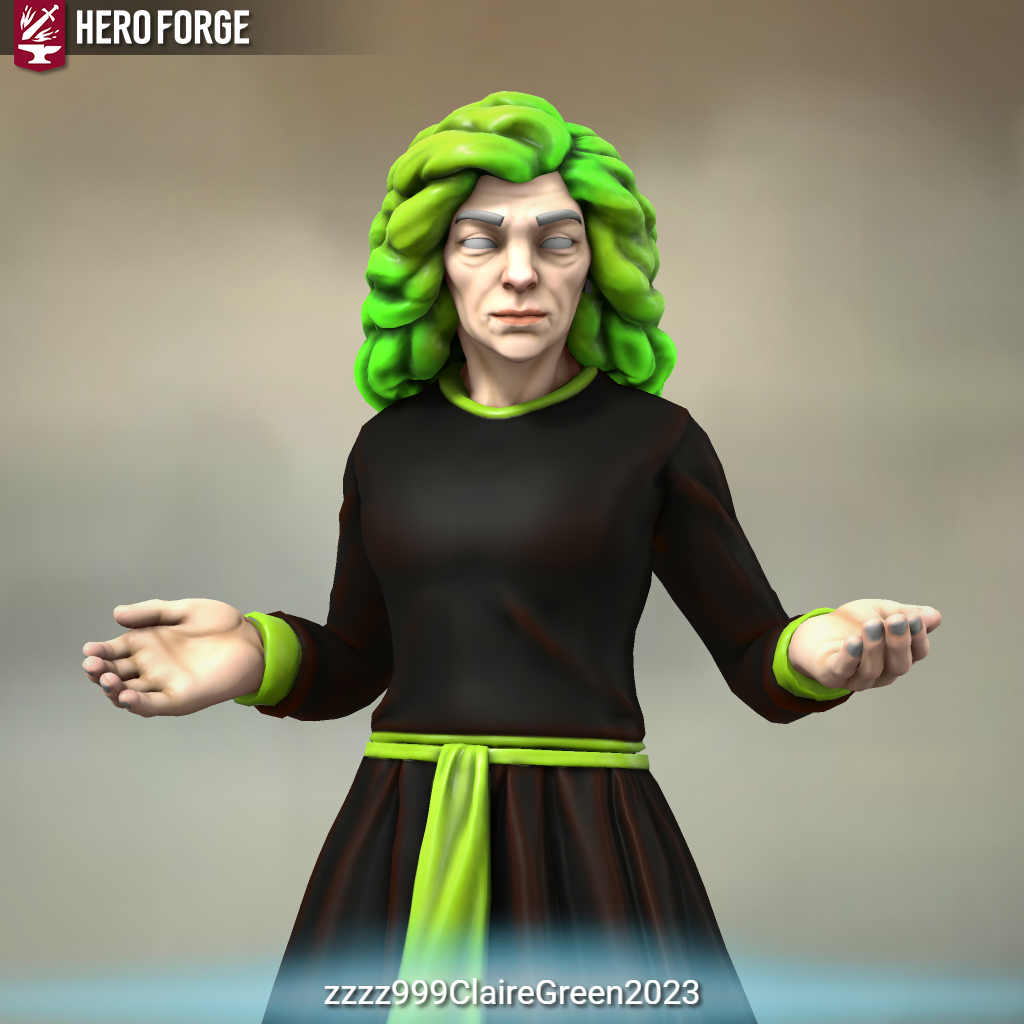Counting Down to the 2028 50th Anniversary of my first published book (September 23, 1978)
 Transman Quaraun (The Pink Necromancer) and his husband King Gwallmaic (aka BoomFuzzy the Unicorn) King of The UnSeelie Court. Main characters of The Adventures of The Pink Necromancer series. Transman Quaraun (The Pink Necromancer) and his husband King Gwallmaic (aka BoomFuzzy the Unicorn) King of The UnSeelie Court. Main characters of The Adventures of The Pink Necromancer series.
This website is a safe zone for LGBTQAI+, pagans, polies, furries, and BIOPIC communities. |
Important:
Fraudulent sites are impersonating Wendy Christine Allen.
- The ONLY official website for Wendy Christine Allen is www.eelkat.com
Fraudulent social media accounts, particularly on Reddit and FaceBook are impersonating Wendy Christine Allen.
- The ONLY official social media accounts for Wendy Christine Allen are listed in the footer here at www.eelkat.com
Any websites and accounts you find online that are NOT on this list are NOT Wendy Christine Allen
Writing Medieval Servants
in Historical Fiction
Additional thoughts...
Home
/
Writing Genre Fiction
/
Historical Fiction
/
Character Creation
/
Medieval Servants
Important:
Fraudulent sites are impersonating Wendy Christine Allen.
- The ONLY official website for Wendy Christine Allen is www.eelkat.com
Fraudulent social media accounts, particularly on Reddit and FaceBook are impersonating Wendy Christine Allen.
- The ONLY official social media accounts for Wendy Christine Allen are listed in the footer here at www.eelkat.com
Any websites and accounts you find online that are NOT on this list are NOT Wendy Christine Allen
While you are here, please take the time to read this:
Do you know who this woman is?
She might be the woman who murdered my son.
Writing Medieval Servants: Their jobs and their place in historical fiction.
Part 2
It is now August 2017.
The original article "Medieval Servants" was written October 14, 2013
The original draft was 10,000 words long, but many parts of it were removed and the published article you know is only 7,000 words long.
Here now are the additional 3,000 words that had been removed...
NSFW Warning!
NOTE: The goal of this page is not to provide you with in-depth details of medieval servants, but rather to point out various disturbing facts about everyday medieval life that historical fiction authors willfully choose to ignore for the sake of writing a warm, fluffy, happy story.
Many of the facts about medieval life presented here are purposely jarring, disturbing, have high squick factors, and are meant to open your eyes to the harshness every day people lived with, in the hopes that writers will stop sugar coating medieval life in their novels, and make some sort of attempt to actually research the period they are writing about, before they write it.
Things that happen today in the 2000's - like bathing daily, white bread or just bread without bugs in it, drinking clean water, and women being thought of as Humans - did not exist in the medieval world.
Because this page details actual things that occurred in every day medieval life, much of the content of this page is Not Safe For Work.
Reader discretion is advised.
Part 2 of My Answer:
To this question
On the topic of writing Medieval Servants:
Their jobs and their place in historical fiction.
Here is the side note, deleted from the original article, but now added here to the Part 2 of it...
In Medieval fantasy you see people attending church services every Sunday. In real Medieval times church services were held once every other month (6 times a year) not weekly. Each family would have had a mall altar or shrine in their homes, where they would pray 5 times a day as they had been taught to do by Catholic monks and nuns. Most villages would have had a monastery or convent either in town or on the outskirts.

People needing religious advice would go there for answers, during the week. People who had sinned would go to the monks and request to be forgiving, than they would pay the sum required to be forgiven for the sin in question. If you told a lie, you may only have to pay a few coins to buy your forgiveness, if you killed your neighbor, you may have to pay by giving your land to the church.
Also in Medieval times most people did not count days or know the concept of weeks/months/years in the same way we do. Most folks just lived one day to the next and when winter ended and planting season arrived they announced that a new year had begun, whether 6 months had passed or 2 years had passed since the last time they planted crops. That was their concept of a year.
They knew to go the church because a town crier would come through and announce that the bishop/ priest/ pope was in town all the way from Italy and it was time to be inspected (going to church was like getting your car inspected, only if you failed to pass the Christianity test you were executed at best, or made the personal indebted and daily tortured slave of the bishop /priest/ pope at worst.)
Bishops/ priests/ popes were the most feared people of the land - more feared than tax collectors, and kings were terrified of them as well, because church leaders were vast land mongers and if they decided they wanted your land, than you would not pass your Christianity inspection no matter how saintly you were. The religious leaders of Medieval times were among the most corrupt, violent, bloodthirsty, murderous men to ever walk the face of the earth at any time period: these men made Hitler look like a saint, that’s how bad they were.
It is important to note that in Medieval times the Catholic leaders: popes, bishops, priests, monks, nuns, etc, were not the celibate unmarried folks we know today. Most were married and had families, polygamy was not an uncommon practice in Medieval times and the wealthier a man was the more wives he could afford to buy. The Catholic church did not forbid leaders from marrying until into the 1600s, well after the Medieval period had ended.
Remember that wives were bought, not married in Medieval times, and a wife was nothing more than a house servant who slept with the master, and there are many books from Medieval times written for men on how to take care of their livestock, and these books contains lists of livestock which include: horses, dogs, cows, wives, pigs, and daughters.

Men could go to the local blacksmith and along with getting his horse shoes, he could also have his wife fitted with a chastity belt (cast iron panties) to prevent other men from using her and a bridle (some of which resembled bird cages bolted to her neck and forehead) which prevented her from talking. Leather makers sold collars and leashes, which wives were lead around by whenever they went out in public. This would have included queens and princesses as well, who most likely to have been kidnapped from enemy kings, and paraded through the streets as trophies, than publicly raped by the king, so that the entire town was a witness to the “marriage”.
Note that the word marriage meant: the act of stealing a woman’s virginity, or the act of claiming ownership by raping her. This was always done publically, both to shame the female into never allowing another man in her bed, and to show other men, this one’s mine I’ll kill you if you touch her. Medieval people did not have the “sex is a sin to be done in secret” mindset that would develop in Victorian times.
In Medieval times: Women were property, marriage was rape, age of consent was 10, incest was common practice, religious leaders got first choice of daughters, fathers got second choice, brothers got third choice, the man with the highest bid got to buy her if no priest or man in the family wanted her, and sex was public.
You got to remember, marrying outside of family was condemned by the Church in Medieval times. Men were expected to marry their daughters. If a man had 4 wives it was because his first wife had given birth to 3 daughters and no sons. If he had a son, then one of the daughters would have gone to the son.
Medieval Europe was VERY clannish and VERY concerned with not "tainting the bloodline". No one mixed races. No one married outside their family in order to ensure purity of blood. If they were marrying outside of family, it was done for political reasons, to unit two regions into one, to end a war, or to pay off a debt. This incest norm became less common in later Medieval years, but still continued right into the Renaissance, and would not be fully shunned until the Victorian era.
Remember: white Europeans were EXCESSIVELY paranoid about getting dirty Semite blood or dirty Canaanite blood or dirty pagan witch blood, mixed in with their pure white Aryan blood. The Templar Knights were glorified for their mass murders of all non-whites, and their white robes, red crosses, and pointy hoods, can still be seen worn by the Templar today. (Raise your hand if you knew the Templar Knights, still existed, still killed all none whites in the name of Christian purity and are now known as The Loyal White Knights of The Ku Klux Klan, the Final Division of The Templar Knights of God? Next time you do a Google search for images of a Templar Knight Uniform, do a side by side Google search of the Klu Klux Klan uniform. Look at a Templar Knight flag side by side a Loyal White Knight flag. You might want to rethink glorifying the Templar Knights when you realize exactly who they are and what they do.)
Remember if your princess really is a princess in a Medieval castle, she'll be expected to start giving birth to daddy king's babies soon as she reach's 10 years old, in order to ensure the purity of their royal white blood and make sure no "evil" non white blood gets into the family tree, and any knights marching around her castle will be white power colour murdering fanatic wearing white robes and brandishing a white flag with a red KKK Templar Knight cross on it.
It was a sin to marry (rape) a nun, thus most girls elected to become nuns as soon as they got their periods.
It is very important to keep these facts in mind when writing historically accurate Medieval fiction and it is especially important to keep the horrors of being a female front and center when choosing to write your Medieval main character as female.
Here is yet another side note, deleted from the original article, but now added here to the Part 2 of it...
Side note: Albinos were common among the European aristocrats. It was what would lead to the belief in Aryan races, that would eventually lead to Hitler murdering Jews. The belief started way back in Medieval times. These frail super white babies were seen as "Holy Children and "proof" that the royals were a direct blood lineage to God himself.
Do you know what caused Albinism?
Incest.
You CAN NOT be born an albino unless you are at minimum a 3rd generation of incest. In other words: your father is ALSO both your grand father, AND your great grand father. It is the ONLY way to produce an albino. Science has proven this through DNA research of albinism in animals AND albinism in Humans alive today.
There are no known albinos alive (animal or human) alive today, that their DNA results have not proven to be the product of 3 generations of close familiar (parent to child to grandchild) incest.
So many people write albinos in their Medieval Fantasy novels, thinking it'll lend to the historical accuracy, seeing how albinos were so common place back then, but they fail to research the medical conditions required to cause albinos to be born and end up showing their lack of research by not have the albino also be a 3rd generation incest child.
It's one of my biggest pet peeves with so called Medieval Historical Fiction. They ALWAYS toss in an Albino to make it "feel more Medieval", but never once research what causes albinism or make any attempt to have the albino be the child of three generations of incest.
Boy, did we go off topic there or what?
Let's get back to your question about what jobs a Medieval servant would have for your princess.
Here is yet another side note, deleted from the original article, but now added here to the Part 2 of it...
Side note: If your princess is Scottish, keep in mind the Scots of Medieval times were the Picts of Alba, and they were black skinned with whooly hair. The NATIVE/TRUE Scotts were NOT white skinned, red haired, green eyed Celts, who would invade Scotland in the 1400s,
The Picts are the "Native" or "Aboriginal" tribes of Scotland, whom the Scots of today have no DNA blood relation to. The Scots of today are the Roman DNA Celts who invaded Scotland and murdered the Native Scots.
ADDITIONAL SIDE NOTE: The Medieval Scots wore kimono looking silk robes and pointed red shoes.
In around 800s, a group of Jewish, Persian Gypsies settled in Alba and intermarried with the Picts.
Because of this is was not uncommon from 800 to 1400s to see Black-Asian Scotsmen wearing silk kimono under their woolen great kilts, and wraped in fur animal skins.
The Picts often painted their skin with blue and red patterns, were frequently tattooed, had huge ropes of dreadlocs, and practiced the art of shrinking heads, with clan kings often having many heads of their enemies hanging from their belts.
This group would go one to break into 3 groups:
- The Scottish Gypsies
- The Tinkers
- The Scottish Travellers
Medieval Scotland had a very "Native American Indian" lifestyle, with small tribal clans, living in very mobile tent/yurt/tee-pee structures.
If your Medieval princess is Scottish, she would have worn silk kimono and fur skins, had black skin, sported dreadlocks and tatooes, and lived with her family in a small tent like structure that could be set up and taken down in minutes, and was only used for sleeping in.
Her family would have moved seasonally following herds in winter, and heading for orchard regions in summer. Keeping in mind oranges grow in Scotland and would have been one of the fruit she commonly eats when they were in season.
Her family would have been DRAMATICLY different from the rest of Medieval Europe, as they would have been horse breeders, with vast herds of tiny Shetland ponies, and they would have been hunter/gathers, not farmers.
She would not have lived in a castle, though some clans did build small round stone huts with leather skins for the roof for use in winter and migrated to those.
She would NOT have had servants.
Depending on her clan, she might have been well versed in either the Torah or the Koran/Quarn.
Being half Hebrew (black "Bible" Jew usually on her father's side) she would be seen by most white Kasha Jews as "an Elohem Mongral".
These Persian Hebrews, because their Hebrew fathers had married Persian women, were cast out of Jewish society and no longer recognized as Jewish. For a while they lived with their Muslim "cousins", but were cast out of here too for their refusal to become Muslim. Most of them practiced a form of witchcraft called "Hoodoo". They were known by most people as "The Magi" or "Magicians" and practiced Astrology, divination, Necromancy (channeling the spirits of the dead), and used gemstones for scrying.
They are what is know by most Americans as "the classic Gypsy fortune tellers". They have no relation to the Romania Gypsyes who come from India and Spain.
They left Scotland in around the 1300s, staying in Egypt for a few years, where they were called by the Europeans "The Gypsies" which means "the people who live amoung the Egyptians".
In the 1500s when the Romani arrived in Europe, they were mistakenly refereed to as Gypsies due to the similarities of their dress and culture. However, the Romany are NOT Gypsies and the Gypsies are NOT Romani. The two groups are completely separate cultures/races/ethnicity.
If your Medieval princess is Scottish, she would have been deeply religious, with knowledge in the Bible, the Torah, and the Koran, but would be a devote practitioner of extremely "pagan" witchcraft like spiritual worship. Her focus would be not on worshiping a deity, but rather on paying respect to the DiJinn and Faeries (2 very similar types of nature spirits.) Everything she does, from eating, to milking the cow, would be done by first kneeling to say thank you to the spirits. She will be praying on beads, multiple times every hour of the day.
As they put no value in material wealth, even the Kings had no houses and lived in tent like structures, the kings being more tribal chiefs then actual kings.
Also the native Scots were very short. Most women were around 4'5" and most men around 5'. They were very tiny, almost small enough to be called pygmies. Remember... they RODE those little Shetland Ponies into battle. Shetland Ponies, small as they are, were plenty big enough for Scottish warriors to ride on. Some of the bog mummies that have been found were only 3 feet tall, and originally thought to be children, but are now known to have been full grown men.
Long touted as mythical folklore, the "Little People" of Scotland are now known to have been very, very real. (In case you're wondering, while in college I was studying them, and actually got to see in person for myself, 3 of these tiny bog mummies, including the 3 foot tall one I just mentioned. They are now today on display in a museum in Portland, Maine if you ever want to see them for yourself.)
A little waif of a white skinned, 10 year old European princess is going to be several inches TALLER then the chubby, black skinned, full grown adult Scotman, of Medieval times.
The Scots of Medieval times were the Picts and were a COMPLETELY DIFFERENT race of people then the Scots of today.
Remember, most of Europe avoided Scotland like the plague in Medieval times due to it's being inhabited "by little dark savages".... Europeans told nightmare tales of "the swarthy skinned little men" who inhabited the hills of Scotland.
I think my #1 biggest, top pet peeve with "Historical Romances Novels" is when they write "Medieval Highland Romance" and have some big, green eyed red haired white dude in a kilt, carrying blond waif off to his castle. You can not get any more historically INACCURATE then that!
Here is yet another side note, deleted from the original article, but now added here to the Part 2 of it...
Back to where we left off...
How did they keep warm? Furs, tapestries, carpets, throw rugs, and many, many, many, many layers of clothes. Plus family beds - everyone slept together. Yeah, your little princess isn’t likely to have her own bedchamber, let alone her own bed. Remember Medieval was a looooooong time again, and was only a few years after Biblical years, in fact Biblical years and Medieval years overlap each other. Roman soldiers after crucifying Christ marched to Britannia to invade castles. Medieval Templar knights, so pissed off by Roman soldiers killing Christ that they marched to Israel to overthrow the Romans. In Medieval times men wore togas and women were wrapped in blanket like clothes, because hose and fancy dresses had not been invented yet. Men in fancy hose, women in long gowns, people in tall pointy funny hats: those are all Renaissance things not Medieval things. Remember that in Medieval times a lot of folks were still wearing bear and wolf skins girdled around their waists, and a lot of people lived in caves still. Yep, cave men. Has it hit you yet the actually time period you are asking about?
Medieval times were happened while the Apostle Paul was writing the Book of Revelations in the Bible.
Yes, they had spots like fox hunts. They also had sports like beating a prostitute then letting her run away while they chased her down on horseback, then the who group of hunters raped her, literally to death. Scientists have researched the phenomena of the punishment of death by rape and determined that it required a women to be raped in succession a minimum of 90 times, before she had been raped enough times to wear down the lining of her vagina and she begin bleeding. She would then have to be raped and additional 30+ times in order to cause her vagina to pull outwards pulling the uterus with it. This was just as common a sport as fox hunting and often was a punishment reserved for noble women who were suspected of adultery, so it's one of the things your little 10 year old princess can look forward to, should her father suspect her of bedding with, say her brother instead of him (her father).
Much of the information you just read here was used in writing the Quaraun series.
The Quaraun series is neither Medieval or Historically accurate. It is time travel Fantasy largely set in the 1400s, but frequently tosses characters into the 1970s, and once in a while into dates of 2,000B.C. to 2525. So, you definitely wouldn't read the Quaraun series looking for any sort of "Medieval History", however, vast amounts of research does in fact go into the creation of every element of the series, thus how I came to be researching Medieval, Middle Ages, and Renaissance.
In 1996, I graduated with a 2 year degree in Theatrical Fashion Design, Dressmaking, and History, and had focused my time period of choice on the study of the 1300s to the 1600s, thus much of my books end up set in this era, with people dressing and acting typical of that period.
I simply love history, love cloths, and am utterly fascinated by the overall fashion history of pretty much every place, time, and culture.
I grew up in the 1970s, thus why you see many of my books set in the 1970s, rather then current era.
In any case, I love finding all sorts of weird little known facts about history, like the ones I've listed on this page here and I hope you've enjoyed reading this as much as I've enjoyed writing it for you.
Thank you for sending me this absolutely wonderful question. It has been by far one of my favorites of all time to sit down and write the answer too. Hopefully I have been able to answer your question. Good luck with you story and have a wonderful day!
More articles like this one, and more then 300 video interviews on writing, can be found in the following links to other articles in this series:
On Writing The Quaraun Series
World-Building In Bizzaro Dark High Fantasy Yaoi
Weird-Building In Bizzaro Dark High Fantasy Yaoi
Building A Magic System In Bizzaro Dark High Fantasy Yaoi
- Wizards vs Witches vs Sorcerers: How are they different?
- Magic Systems and How to Build Them
- Necromancy: How will resurrection affect society as a whole?
- Spell-casting Side Effects of Magic
- Necromancy FAQ - A Real Necromancer Compares Fantasy Necromancy With The Reality
- Colour Magic - Gypsy Style
- Beware of White Men In Gypsy Clothing: Fake Psychic Scams
- Child Sacrifice in Fantasy Novels
Plotting & Writing Bizzaro Dark High Fantasy Yaoi
- Ernest Hemingway Style of Writing Literary Fiction Used In Epic Fantasy Novels
- Do you write a novel start-to-finish?
- Ideas, Ideas, Ideas (Where Do You Get Them?)
- Should I plan for ending or just keep writing?
- NaNoWriMo Overachievers: How did you do it?
- How Long is 50,000 Words?
- Why Write 50,000 Words In 30 Days?
- How long does it take to hit 1667 words?
- Average Typing Speed
Character Creation In Bizzaro Dark High Fantasy Yaoi
Writing Sex In Bizzaro Dark High Fantasy Yaoi
Disabled Characters In Bizzaro Dark High Fantasy Yaoi
Drug Use In Bizzaro Dark High Fantasy Yaoi
Horror In Bizzaro Dark High Fantasy Yaoi
Here are some additional articles I thought you might find helpful:
NOTE: The links in this blue box, go to other authors' websites. Clicking the below links will take you away from EelKat.com and direct you to outside websites.
- I Have An Idea for a Novel! Now What?
- The Keys to a Great Opening Scene
- The Shocking Truth About Writing For Money
- Maggie O'Farrell: How I write
- How to brainstorm your story idea into a working concept
- What Do You Have to Trade To Be a Success?
- Pulling Your Hero Into the Magical Realm
- How to write, publish and market a book in 2017
- The Ugly Truth About Getting Your Book Published
- Pantser and Proud of it
- The Importance of Writing Every Day
- Set Your Fiction in Locations You Love
- The Truth About How Much Freelance Writers Make
- Signs you're ready to ditch the home office for a shared workspace
- Writing Prompt Research Resource For Short Story & Weird Horror Authors - Mean Streets: Edward Grazda's fascinating images of New York City between 1970 and 1985
- Exploring Speculative Fiction Sub-Genres: Cyberpunk
- The Grand Conspiracy Against Publishing Your Book
- Research Resource For Historical Fiction & Fantasy Authors - 7 Ancient Sites That Have Been Damaged or Threatened by ISIL
- Bringing sanity to clarity - Style points from Pinker in new book
- How to Write Historical Fiction: 7 Tips on Accuracy and Authenticity
- Office for Civil Rights, Department of Health and Human Services
- When to Conduct Individual Interviews
What Is This Site?
I'm an author. This is an author home page. It's about me, my life, my books, my hobbies, my home town, and anything else that applies to me and my life.
Since starting my writing career in 1978, I have written 130+ novels, 2,000+ short stories, 6,000+ non-fiction articles (ALL are found on this site), a few dozen stage plays, 12,000+ blog posts, and a few comic book scripts for Disney's Uncle Scrooge and Donald Duck (I only worked for Disney one year (in 2005) and only wrote a few stories for their Danish comic books).
NOTE: I ONLY write the Quaraun series (aka The Twighlight Manor series aka The Adventures of Quaraun the Insane). In recent years there has been an issue with impersonators trying to pass books off as written by me, notably several non-fiction and Erotica books. I write neither nonfiction nor Erotica.
ALL of my books and their cover arts are listed on my website here. Beware of any books you find claiming to be me. If the books are NOT listed here on my website, they are NOT my books.
In fiction works, I specialize in Weird/Bizarro Tales set in 40th century CyberPunk-Quasi Medieval, Cozy Dark Fantasy and Science Fiction worlds featuring an intersex Elf and his Faerie husband main characters. I DO NOT WRITE ANY OTHER SERIES - THIS SERIES IS THE ONLY ONE I WRITE.
Non-fiction (found ONLY here on my site) is daily updates of events in my life, and how-tos on how I write my novels.
I DO NOT write Erotica.
I DO NOT write books with HUMAN characters.
The Erotica books and books with Human characters, that you are finding, are written by scammers trying to impersonate me.
There is an ongoing FBI investigation into this matter. If you find any such books, please report them to FBI Agent Andy Drewer @207–774–9322
People always ask why I have a video recorder running 24/7. Watch these 4 videos of The Scarborough Walmart.
I have a video recorder running 24/7. Because this parking lot is where I was attacked a second time by the woman who crippled me with the golf club at Southern Maine Community College in 2013 (who also murdered my 8-month-old son at the same time) this is the location of her 2nd attack, the July 2016 attack with a shopping cart, the attack that left me in a wheelchair and despite over 200 "security cameras" and signs saying there are cameras in use... the police did not find even ONE actual REAL camera. Every "security camera" on this building and parking lot was ALL fake "dummy cameras" and that is why there is no video footage of my son's murderer.
I started carrying a camera 24/7 the very next day after Scarborough police informed me they could not identify the blonde woman who attacked me or her gold Volvo 240GL station wagon, because EVERY CAMERA at this store's parking lot was an empty case with no real camera inside it. My son would be 12 years old this Christmas 2025, and his murderer walks free, still unidentified because this parking lot did not have real cameras.
Those things that look like cameras on the building and light poles, are fake, according to the Scarborough Police Department. That is why I have a camera running 24/7, because my son's killer walks free because there was no camera the day we were attacked.
While you are here, please take the time to read this:
Do you know who this woman is? She might be the woman who murdered my son.
146 Portland Ave, Old Orchard Beach, Maine, is NOT FOR SALE.
And I'm sick of real estate agents who are too incompetent to research land ownership before they show up to stick a for sale sign in my yard.
The fact of the matter is, my son was murdered in 2013, and the friends and family of the murderer think it is funny to keep ILLEGALLY listing my land for sale, because apparently their child murdering bitch friend didn't hurt me enough by crippling me with a golf club, ripping my baby out of my 8 month pregnant belly and beating his brains out on the ground with a golf club.
Also, her friends and family like to gaslight me by doxing me on ufo and alien abduction forums, while pretending to be me, and trying to make it look like I believe in ufos or aliens, even though I think people who believe in ufos are raving lunatics and people who claim to be alien abductees are crazy.
So, yeah, my son was murdered and the murder's friends and family endlessly harass me, my friends, and my family both online and offline, and I'm not happy with it at all.
There is an ongoing FBI investigation into this matter.
The FBI is looking for information into:
- identifying my son's murderer,
- identifying the scammers who listed my land for sale,
- identifying the impersonators who pretend to be me both online and offline,
- the harassers who are harassing the homeless man and sending the UFO nuts to harass him...
- If ANYONE tells you 146 Portland Ave Old Orchard Beach, Maine is for sale:, please report them to FBI Agent Andy Drewer @207–774–9322
- If ANYONE tells you I believe in aliens, demons, or UFOS, please report them to FBI Agent Andy Drewer @207–774–9322
- If ANYONE tells you my homeless friend is an alien, a demon, a cryptid, or named Etiole for sale:, please report them to FBI Agent Andy Drewer @207–774–9322
I'm going to repeat it because I'm tired of people showing up and making offers:
146 Portland Ave, Old Orchard Beach, Maine, is NOT FOR SALE.
There is NO ONE who has authorization to use my land.
NO ONE.
Not my mother.
Not my father.
Not Ben.
Not my mother’s Atwater relatives.
No one.
If ANY ONE hires you to do ANYTHING on my land, know that you are doing it ILLEGALLY and WITHOUT my knowledge or permission.
My mother has ZERO legal right to hire you to do anything at 146 Portland Ave. Old Orchard Beach, Maine.
My father has ZERO legal right to hire you to do anything at 146 Portland Ave. Old Orchard Beach, Maine.
Ben has ZERO legal right to hire you to do anything at 146 Portland Ave. Old Orchard Beach, Maine.
My mother’s Atwater relatives have ZERO legal right to hire you to do anything at 146 Portland Ave. Old Orchard Beach, Maine.
While you are here, please take the time to read this:
Do you know who this woman is? She might be the woman who murdered my son.
How did you build your audience?
Not online, that's for sure.
aka How to sell ten million books
aka How I sold ten million books.
The Park Bench Method of Writing
(just the article)
or
The Park Bench Method of Writing
(with the list of 10k writing prompts - takes a LONG TIME to load - SEVERAL MINUTES!)
I Think UFO and Alien Believers Are Weird Here's Why...
Does every writer have to deal with this shit?
|
Thank you for stopping by and have a nice day! ꧁✨🌸🔮🦄🔮🌸✨꧂ And if it’s your birthday today: ִֶָ𓂃 ࣪˖ ִֶָ🐇་༘࿐꧁ᴴᵃᵖᵖʸ☆ᵇⁱʳᵗʰᵈᵃʸ꧂🤍🎀🧸🌷🍭 |
 |
Get an email whenever Wendy Christine Allen 🌸💖🦄 aka EelKat 🧿💛🔮👻 publishes on Medium.
I also write on these locations: | Amazon | Blogger | GumRoad | Medium | Notd | OnlyFans | Tumblr | Vocal |

















